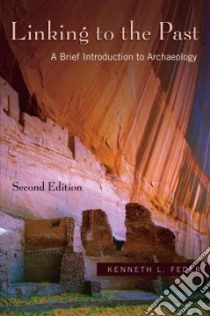Linking to the Past - 9780195331172
Un libro in lingua di Feder Kenneth L. edito da Oxford University Press, 2007
- € 109.40
- Il prezzo è variabile in funzione del cambio della valuta d’origine
This thoroughly revised Second Edition of Linking to the Past features:
* A completely reorganized structure that ensures all students take the same pathway to learning the material traditionally covered in an archaeology course
* An expanded focus that covers the whole of the archaeological experience (including ceramics, theory, and human burials) and integrates examples from around the globe
* Updated material on such cutting-edge technology and theory as transformation processes, GIS, Total Station, glacial dating, and aerial photography
* Discussions of current issues facing archaeology, including federal legislation that protects archaeological sites
* More in-depth coverage of the scientific method; the history and development of archaeology; various theoretical approaches; and the archaeology of social inequality, race, gender, and the sacred
* An in-text CD with interactive student exercises and slide shows
Written in a conversational style, Linking to the Past: A Brief Introduction to Archaeology, Second Edition, offers students a concise and entertaining introduction to archaeological methods. Author Kenneth L. Feder helps students relate to the study of the past and learn what it means to think like an archaeologist by using accessible examples drawn from daily life; he examines the evolution of the beer and soda can to teach about seriation, demonstrates how technology changes over time with an iPod, and introduces dendrochronology by discussing a tree that fell on his property during a storm. Employing an "ask-and-answer" approach, Feder leads students through a wide-ranging series of questions about how archaeologists find, recover, study, and interpret the material culture left behind by earlier peoples.
To give students an opportunity to think like archaeologists, the author offers interactive student exercises and slide shows (provided on the in-text CD). Linked to chapters in the text, the exercises on the CD include exploring a topographic map to see what features might support human habitation, translating radiocarbon dates into calendar years, and calculating the age at death of a sample of human beings by examining their skeletal features. The text is also enriched by additional pedagogical features including detailed study questions at the end of each chapter, an extensive glossary of more than 200 key terms, and suggestions for further reading. An Instructor's Manual on CD is also available.
Informazioni bibliografiche
- Titolo del Libro in lingua: Linking to the Past
- Sottotitolo: A Brief Introduction to Archaeology
- Lingua: English
- Autore: Feder Kenneth L.
- Editore: Oxford University Press
- Collana: Oxford Univ Pr (Paperback)
- Data di Pubblicazione: 21 Dicembre '07
- Genere: SOCIAL SCIENCE
- Argomenti : Archaeology Archaeology Fieldwork
- Pagine: 474
- Dimensioni mm: 222 x 152 x 25
- ISBN-10: 0195331176
- EAN-13: 9780195331172


